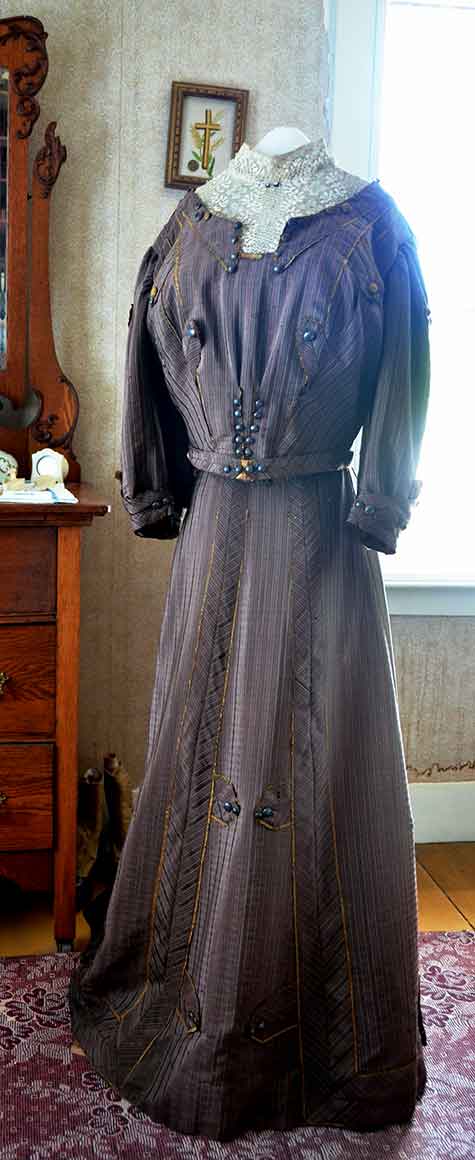
Antique dress from the family’s collection (photo courtesy Judy Weaver)
The house consists of sixteen rooms, three attics and three cellars. It has been added onto and remodeled several times over its life.
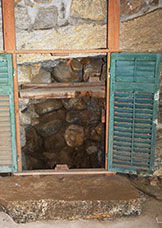
Spring-fed well located in the oldest portion of the cellar
The property was purchased in 1746, possibly from David Shaw. The first house was built in 1749. This is the ell on the lefthand side of the modern house. The original foundation is still there. It features an interior well in that portion of the cellar that still provides water most of the time.
In 1820, a much larger center chimney addition completely changed the look of the original house. The chimney foundation is still in the cellar and is a major support for the house.
The first person to live in the house who was named Keep was Lamira Keep Chapin. She moved into the house with her husband, Marcus Chapin, in 1854. They remodeled the house in 1863 into more or less what you see now. By looking at floor boards, it can be seen that much more remodeling has been done over the years.
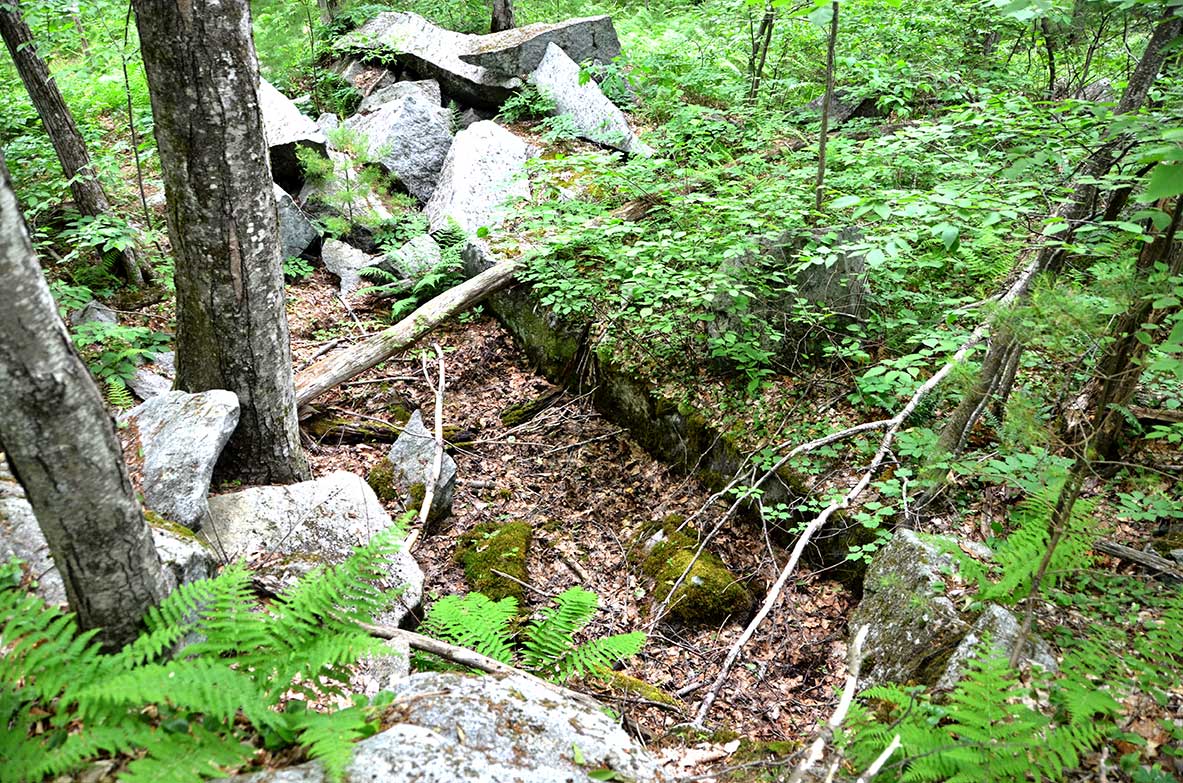
This old quarry is now a vernal pool in the spring
The Keeps were among the first settlers in Monson and farmed this land. They were strong supporters of the Congregational church and took active parts in education and town government. The property has about 75 acres of farmland, a pond, and a small granite quarry (now a certified vernal pool).
The Keeps were savers and collectors of family history and documents, and the artifacts of daily living over a span of 150 years. Among the collections are diaries from the 1860s to the 1940s that detail daily life, and extensive records of the income produced on the farm and the purchases made.
In 1893, Myra’s father, Charles Chapin Keep, brought his bride, Pearl Beckwith, to live in this home that he was occupying with his parents, Edward and Mary Keep. An addition to the house that was made to accommodate the newlyweds, their purchases of all new bedroom and kitchen furniture and dishes, are documented and form the basis for several exhibits.
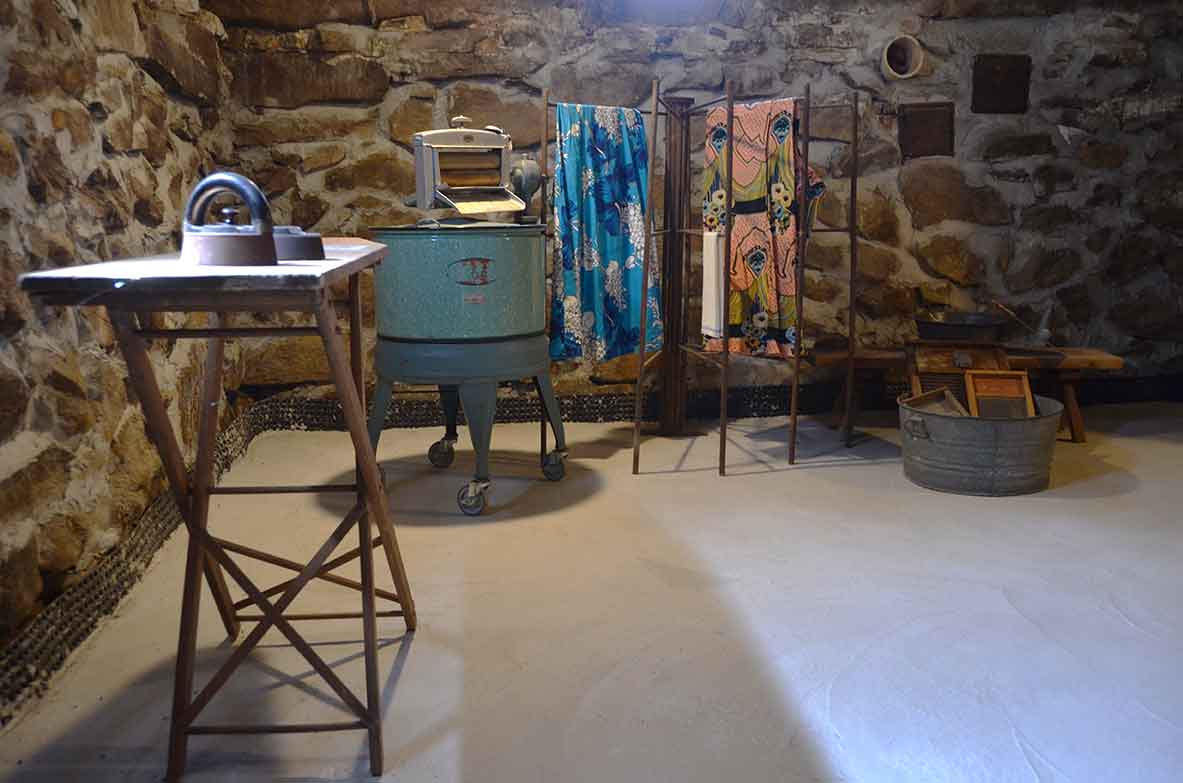
A collection of laundry-related artifacts from the homestead displayed in the “new” cellar
In the house are the furniture and belongings of her family who lived there for over 150 years. This includes the bedroom that her parents moved into on their wedding day in September 1893 with its original wallpaper, carpet and furniture—and the bill of sale for the furniture. Also in the house is the original Kenmore wringer washer. Myra had traded it to Bob North, a well-regarded local plumber, for a new washer. The former owner of the Lost Sock Laundry in Monson saw it at a tag sale and bought it. It eventually found its way back to the Keep Homestead.
There is a story that when Charles married Pearl, she said, “I’ll move into your family’s home with you, but I won’t share a kitchen with your mother.” True or not, there are two kitchens in the house—the original kitchen is circa 1890. Most of these photos are of the 1890s kitchen. The pink paint and gray tiles are Myrna’s efforts to bring 1950s style into the kitchen.

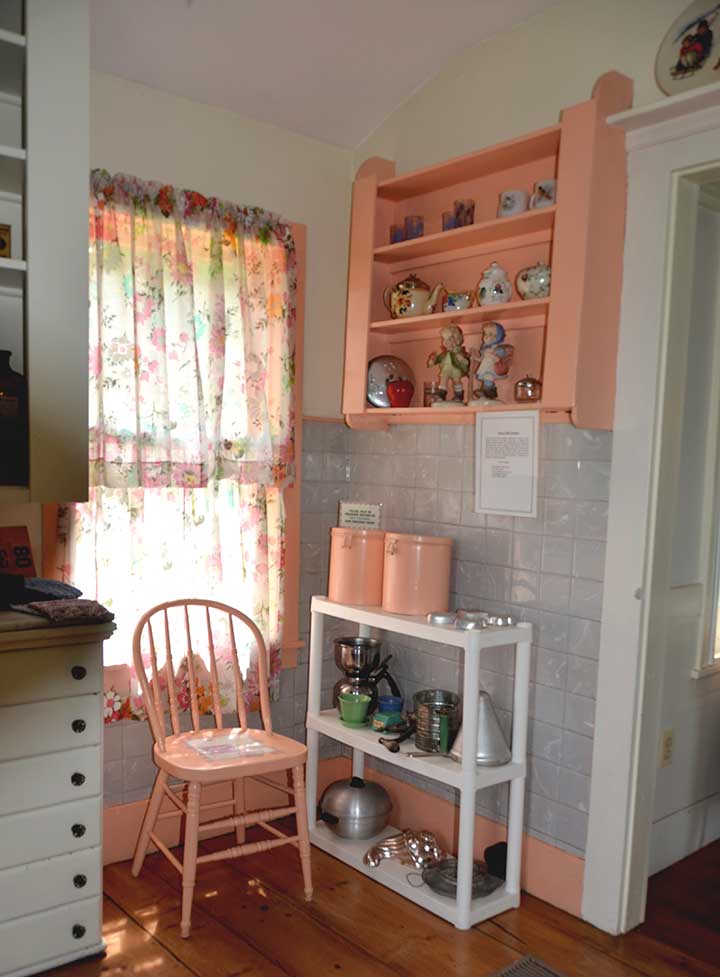
At left (above on mobile) is the pantry in the “new” kitchen (photo courtesy Judy Weaver). At right is a corner of the kitchen with gray locally made tile and pink accents appropriate for a 1950s kitchen. Clearly, the ’50s plastic tiles were not part of the original house. They were made in Monson at the C. F. Church Company (motto: Church Toilet Seats—The Best Seat in the House).
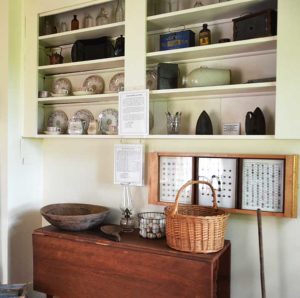
Charles and Pearl‘s bedroom on the southeast corner is ready for the newlyweds to move into. It still has the original wallpaper, carpet and furniture, and a copy of the bill of sale for the furniture hangs on the wall outside. Learn more about the interesting crazy quilt on their bed and the many other quilts in the Keep Homestead Museum collection.
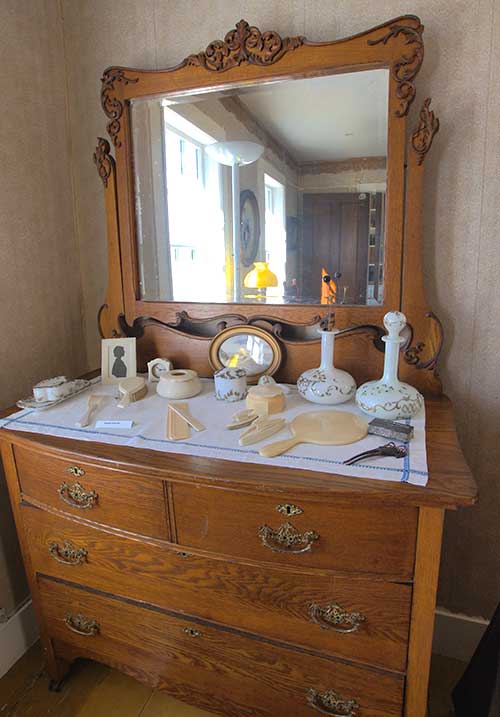
Bedroom dresser (photo courtesy Judy Weaver)
Another bedroom represents the children’s room with the brass bed, a handmade quilt on the bed, and toys.
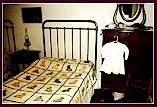
The Scottie dog appliqué quilt on the bed is one of almost 30 Keep Homestead Museum quilts.
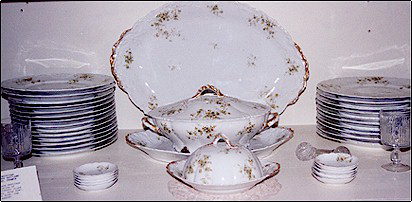
The dining room closet contains their parents’ 144-piece set of Haviland Limoges china with its original bill.
The furniture reflects the 1930s. A cruet set and silver candelabra sits on the marble-topped chest in the dining room beneath a cross-stitched sampler.
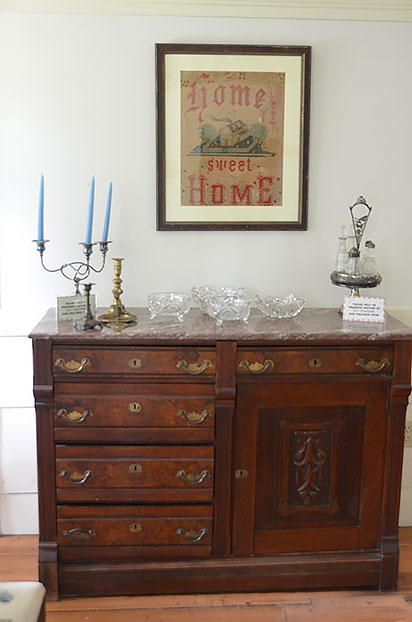
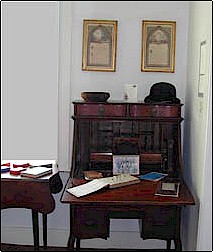 Myra, a school teacher, married her first husband, Charles Lovell, in 1929. Lovell was a Congregational minister who served the First Church in Monson from 1919–1925. They returned to Monson in 1941 to care for Myra’s parents. In the “Minister’s Corner” on the second floor are Bibles and religious books owned by Charles. On display are items with Charles’ own handwriting (sermons, hymns, even his notes on the pages of his Bible).
Myra, a school teacher, married her first husband, Charles Lovell, in 1929. Lovell was a Congregational minister who served the First Church in Monson from 1919–1925. They returned to Monson in 1941 to care for Myra’s parents. In the “Minister’s Corner” on the second floor are Bibles and religious books owned by Charles. On display are items with Charles’ own handwriting (sermons, hymns, even his notes on the pages of his Bible).
In the 1930s bedroom, in addition to furniture bought for her second marriage, to Ralph Moulton, are paintings done by Myra, several examples of her needlework, a collection of perfume bottles and a collection of quilts.
 Also represented is a miniature classroom with her teaching tools, books, and an exam on the blackboard. There are copies of some of her students’ work that have been laminated so that visitors can look through them.
Also represented is a miniature classroom with her teaching tools, books, and an exam on the blackboard. There are copies of some of her students’ work that have been laminated so that visitors can look through them.
Beyond the needlework represented in the Keep Museum quilt collection, all of the women in the family were accomplished needleworkers and extensive examples of their work are distributed throughout the house. Myra mastered many forms of needlework and many of her works are on display, as are examples of her work in oil, watercolor and ceramics.
Both Myra and her father were “rock hounds” and many examples are displayed along with an extensive shell collection.
Myra was nationally known for her button collection of several thousand cards. She was an avid collector and her button collection is considered one of the largest in the United States.